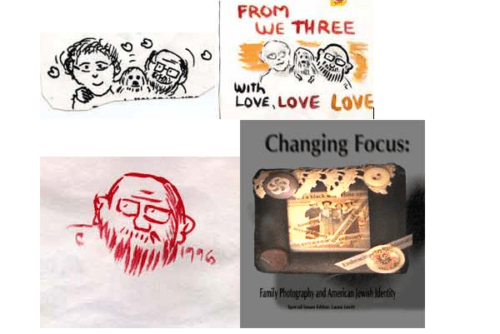Theorizing Standup Comedy
Contemporary standup comedy has various chronotopic antecedents, for instance, in the tradition of “fools, jesters, clowns and comics, which can be traced back at least as far as the Middle Ages,” to that of popular minstrel theater in nineteenth-century America, to that of the transatlantic lecture circuit supported by humorists such as Mark Twain and Artemus Ward.
1 In the early twentieth century, standup comedy was the backbone of vaudeville, burlesque, and variety theater; and, in the post-war period, nightclubs, resorts, coffeehouses, as well as contemporary comedy clubs all emerged as venues for the stand-alone comic, the sketch ensemble, and the two-person comedy team. Those who try to account for the particular type of popularity standup comedy has enjoyed since the mid-1960s (characterized, for instance, by the emergence of the comedy club2, and by the influence of comics in four televisional genres: the comedy/variety show, the situation comedy, the talk show, and game show) often turn to psychological and economic explanations, noting that comedy functions as an entertaining form of tension release, at an affordable cost.3 However, a political explanation for the popularity of comedy clubs might be offered as well. The erosion of faith in a “rational” public sphere gives rise to an alternative public forum where observations on the politics not just of government but of everyday life can be aired via entertainment.
Elaborating on the standup comic as contemporary anthropologist, Stephanie Koziski credits these entertainers with making “visible to an audience tacit areas of unacknowledged human attitudes and behaviors, residing in private unofficial realms” (59).4 Stand-up comics make political knowledge evident in everyday life amusing to ponder, and also render political aggression – expressions of desire for power – both palpable and palatable. There is always the risk, of course, that an audience will refuse to engage the comic’s aggression disguised as humor. The most notable manifestation of this refusal is dead silence – an indication that the audience has not been moved. Comics typically respond to such lack of engagement by making a joke of the audience’s refusal to laugh (basically, a pity joke where the comic cajoles the audience into laughing at their lack of laughter). However, the point to be registered, here, is not that the affectual public sphere ceases to exist if the comedien(ne) fails to engage the audience – they don’t laugh, or laugh at parts not intended to be funny – but that an alternative forum of collective political knowledge emerges through this medium of pathos and sensation (the body shaking with laughter) that challenges classical notions of propriety and dignity, as well as (modern notions of) rationality as preconditions for a proper (communicative) public sphere. This channeling of the public sphere through entertainment suggests a notion of public dialogue being more forceful (effectual) when it is affectual as well. In other words, it’s not that the notion of a rational public sphere ceases to exist, but that the tenability of this rational public sphere – resting on a notion of abstract citizenship, or requiring abstraction as precondition of voice – has been called into question.5 Moreover, just as the “rational” public sphere does not cease to exist because there are those who cannot participate in it (e.g., the mentally infirm), the affectual public sphere, similarly, does not evaporate because there are those who refuse to be shaken. However, more and more, the rational public sphere is revealed as a phantasm; standup comedy as both commentator on and alternative to that rational public sphere underscores the phantasmatic qualities of the rational public sphere itself.
In his theory of standup comedy, John Limon casts a more formalist light on how this popular entertainment functions: “What is stood up in stand-up comedy is abjection. Stand-up makes vertical (or ventral) what should be horizontal (or dorsal)” (4). His thesis turns on a double meaning of abjection, as well as a double meaning of “standup”:
By abjection . . . I mean [first] . . . what everybody means: abasement, groveling prostration. Second, I mean by it what Julia Kristeva means: a psychic worrying of those aspects of oneself that one cannot be rid of, that seem, but are not quite, alienable Ñ for example, blood, urine, feces, nails, and the corpse. The ‘abject,’ in Kristeva’s term of art, indicates what cannot be subject or object to you. . . .
To ‘stand-up’ abjection is simultaneously to erect it and miss one’s date with it: comedy is a way of avowing and disavowing abjection, as fetishism is a way of avowing and disavowing castration. Fetishism is a way of standing up the inevitability of loss; stand-up is a way of standing up the inevitability of return. (4-5)
To clarify the geometry that Limon offers, standup comedy both makes erect what is abased and, by doing so, staves off a kind of boundary- or category- crisis between subject and object, embodied in the liminal category of the “abject” that threatens always to return, to undo the alienation one intends for it. The erection of the abased is, in a sense, a spatial tactic of verticality that allows one (through its geometric distractions) to miss one’s (temporal) date with blood, urine, feces, nails, and the corpse, precisely the elements much of standup performance employs to comic effect. I would note that vertical axis is often overlooked in spatial analysis. This vertical movement is, in fact, not only how standup operates but a principal of architecture that Cho maps as the bourgeois home.
- See Mintz, Bushman, Watkins, and Stebbins. Another antecedent, suggested by one critic, are the prologues to the Greek dramas, which though not traditionally in the mode of jest, anticipate the standup comedian’s role as an entertainer who “speaks to and for the common people” (Stebbins 6). [↩]
- Phil Berger describes the comedy chain’s emergence in a restaurant in suburban New Jersey, after a promoter, Jerry Stanley, approached the restaurant’s owner with the idea of booking a comedian in the restaurant’s entertainment room (Stebbins 12). These “restaurants that had separate rooms for entertainment” evolved into the comedy rooms that flourished in the 1980s; “In 1980 there were ten such places in the United States. By 1987, they numbered somewhere between 250 and 300” (qtd. in Stebbins, 13). Betsy Borns gives an alternative account of “the road’s” origins: “until about 1978, the road, as we know it today, didn’t exist. In that year, a comic named Ron Richards began booking comedians from Manhattan’s showcase clubs into several Ground Round restaurants in New Jersey. Six months later, he helped out an ex-comedian friend, Jerry Stanley, to set up similar shows in other New Jersey restaurants. By 1979, Ron Richards was out of the business, and Jerry Stanley was getting very rich very fast” (Borns 57). [↩]
- Robert Stebbins discounts the explanation of tension release as not rigorous enough for “life has been as tense, if not more so, at other periods in recent history” (16), and concludes that “comedy as affordable entertainment is a more plausible explanation,” arguing that comedy clubs “filled the gap left by a decline in public taste for discotheques and rock bars” (16). Less concerned with the social history of contemporary standup comedy, Lawrence Mintz frames “modern American standup” as providing some of our “most vauable” social and cultural analysis (77). Following Stephanie Koziski, Mintz nominates the standup comedian as “contemporary anthropologist” (75). See also Kozinski. [↩]
- While predominantly blurring the line between anthropologist and standup comedian, Kozinski does underscore this remaining distinction, “the anthropologist is – by training – a sympathetic outsider, while the comedian is, in most cases – by temperament – a cynical insider. [Most anthropologists] hold hope for the possibilities available to human society, in contrast to standup comedians who are informed by anger and despair at the inherent weak, stupid and evil tendencies in human nature. The comedian’s pessimism goads him or her into looking for society’s flaws and broadcasting those revelations through a special kind of enacted social drama to a select public” (63). Though somewhat overstated, Koziski’s comments have suggestive implications both for thinking Western anthropologies of other (usually dubbed more “primitive”) cultures as nostalgic interventions into the “First World’s” public sphere and for theorizing the comic as an ethnotainer or self-ethnographer whose “pessimism” might be directed not just toward the society in which the comedian walks but toward the limits and possibilities of delivery such a message in a rational, rather than serio-comic, manner; that is, the comedian eschews naïve faith in non-duplicitous modes of both signification and knowledge acquisition (itself a ploy for power in the comic’s view). The political or social critique the comic delivers grapples in both form and content with that pessimism toward an innocent knowledge. [↩]
- My argument, to be sure, is not that stand-up performance takes the place of the rational public sphere but rather that in addition to psychological and economic explanations for its popularity, we might also consider political explanations as well. In his introduction to The Phantom Public Sphere, Bruce Robbins notes the dominant story told in various writings from the 1960s onwards that the public is in decline: “Publicness, we are told again and again and again, is a quality that we once had but have now lost, and that we must somehow retrieve” (viii). The contributors to Robbins’ volume contest the simplistic terms in which the public (state administration) has been opposed to the private (market forces), noting that in the “‘republican virtue’ model . . . the public means community and citizenship, as distinct both from state sovereignty on the one side and from the economy on the other” (xiii). Elaborating on how “the lines between public and private are perpetually shifting” (xv), the contributors to Robbins’ volume “try . . . to detect and evaluate publicness that is already there in diverse forms, not a single norm or hypothesis set against contemporary people, places, and instutions but a multitudinous presence among the conditions of postmodern life” (xii, emphasis added). In the same spirit, I turn to the comedy stage as an alternate public sphere already there. [↩]




